Name Janusz Korczak Siblings Anna Lui | Role Educator | |
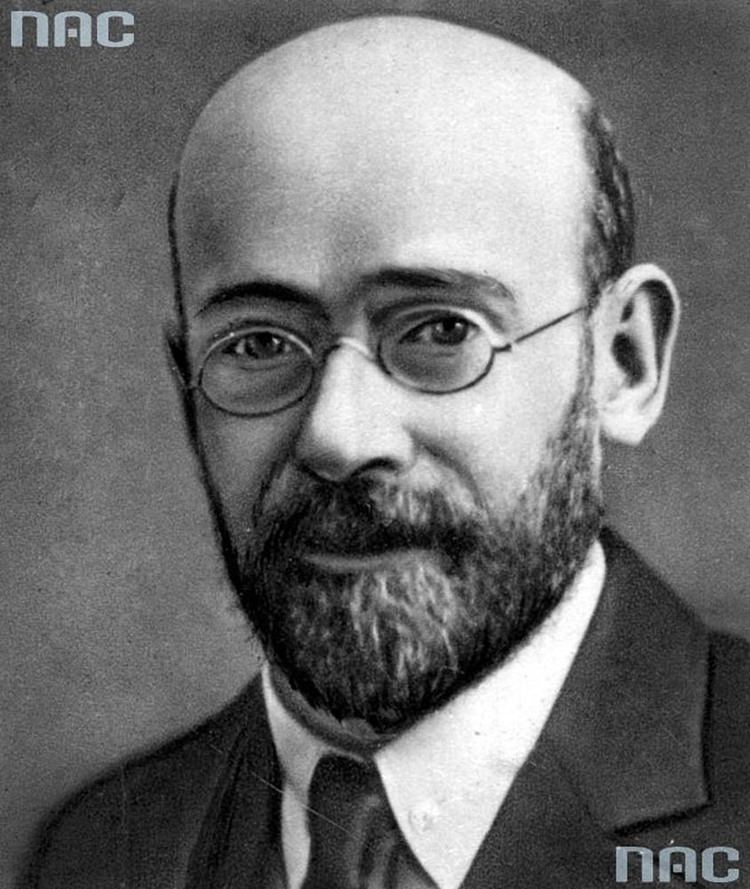 | ||
Full Name Henryk Goldszmit Occupation Parents Cecylia Gebicka, Jozef Goldszmit Books King Matt the First, Ghetto Diary, Kaytek the Wizard, Little King Mattyand the Deser, When I Am Little Again Similar People Irena Sendler, Adam Czerniakow, Uri Orlev, Hatif Janabi, Anne Frank | ||
Story of a hero janusz korczak
Janusz Korczak, the pen name of Henryk Goldszmit (22 July 1878 or 1879 – August 7, 1942), was a Polish-Jewish educator, children's author, and pediatrician known as Pan Doktor ("Mr. Doctor") or Stary Doktor ("Old Doctor"). After spending many years working as director of an orphanage in Warsaw, he refused freedom and stayed with his orphans when the institution was sent from the Ghetto to the Treblinka extermination camp, during the Grossaktion Warsaw of 1942.
Contents
- Story of a hero janusz korczak
- Hank brodt on janusz korczak
- Biography
- Sovereign Poland
- The Holocaust
- Writings
- Childrens books
- Pedagogical books
- Thoughts on corporal punishment
- Fiction
- Other books
- In popular culture
- References
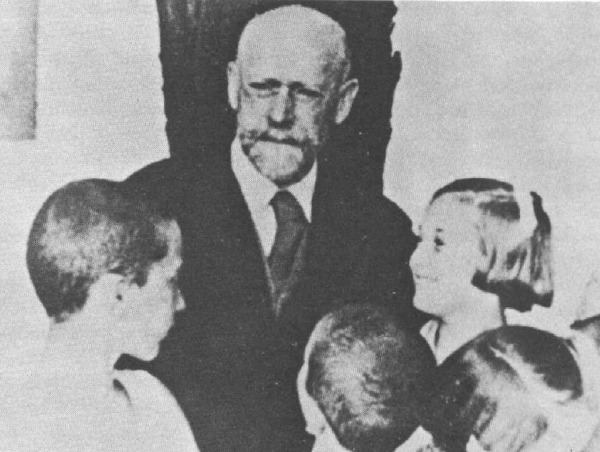
Hank brodt on janusz korczak
Biography

Korczak was born in Warsaw in 1878 or 1879 (sources vary) into the family of Jozef Goldszmit, a respected lawyer from a family of proponents of the haskalah, and Cecylia nee Gebicka, daughter of a prominent Kalisz family. Born to a Jewish family, he was an agnostic in later life who did not believe in forcing religion on children. His father fell ill around 1890 and was admitted to a mental hospital where he died six years later in April 1896. Spacious apartments were given up on Miodowa street, then Swietojerska. Henryk worked as a tutor after school. In 1898 he used Janusz Korczak as a writing pseudonym in the Ignacy Jan Paderewski Literary Contest. The name originated from the book Janasz Korczak and the Pretty Swordsweeperlady (O Janaszu Korczaku i pieknej Miecznikownie) by Jozef Ignacy Kraszewski. In the 1890s he studied in the Flying University. During the years 1898–1904 Korczak studied medicine at the University of Warsaw and also wrote for several Polish language newspapers. After graduation he became a pediatrician. In 1905−1912 Korczak worked at Bersohns and Baumans Children's Hospital in Warsaw. During the Russo-Japanese War in 1905–1906 he served as a military doctor. Meanwhile, his book Child of the Drawing Room (Dziecko salonu) gained him some literary recognition. After the war he continued his practice in Warsaw.

In 1907–1908 Korczak went to study in Berlin. While working for the Orphan's Society in 1909 he met Stefania Wilczynska, his future closest associate. In 1911–1912 he became a director of Dom Sierot in Warsaw, the orphanage of his own design for Jewish children. He took Wilczynska as his assistant. There he formed a kind-of-a-republic for children with its own small parliament, court, and a newspaper. He reduced his other duties as a doctor. Some of his descriptions of the summer camp for Jewish children in this period and subsequently, were later published in his Fragmenty Utworow and have been translated into English.
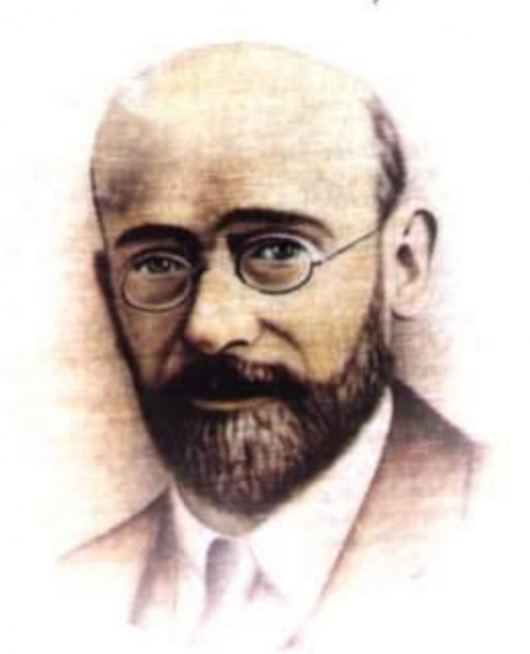
During World War I, in 1914 Korczak became a military doctor with the rank of Lieutenant. He served again as a military doctor in the Polish Army with the rank of Major during the Polish-Soviet War, but after a brief stint in Lodz was assigned to Warsaw.
Sovereign Poland

In 1926 Korczak arranged for the children of the Dom Sierot to begin their own newspaper, the Maly Przeglad (Little Review), as a weekly attachment to the daily Polish-Jewish Newspaper Nasz Przeglad (Our Review). In these years, his secretary was the noted Polish novelist Igor Newerly.

During the 1000's he had his own radio program where he promoted and popularized the rights of children. In 1933 he was awarded the Silver Cross of the Polonia Restituta. Between 1934–36 Korczak traveled every year to Mandate Palestine and visited its kibbutzim, which led to some anti-semitic commentaries in the Polish press. Additionally, it spurred his estrangement with the non-Jewish orphanage he had also been working for. Still, he refused to move to Palestine even when Stefania Wilczynska went to live there in 1938. She returned to Poland in May 1939, unable to fit in, and resumed her role of the Headmistress.
The Holocaust
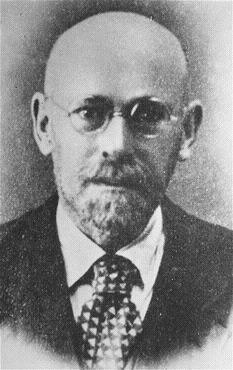
In 1939, when World War II erupted, Korczak volunteered for duty in the Polish Army but was refused due to his age. He witnessed the Wehrmacht takeover of Warsaw. When the Germans created the Warsaw Ghetto in 1940, his orphanage was forced to move from its building, Dom Sierot at Krochmalna 92 to the Ghetto (first to Chlodna 33 and later to Sienna 16 / Sliska 9). Korczak moved in with them. In July, Janusz Korczak decided that the children in the orphanage should put on Rabindranath Tagore’s play, The Post Office.
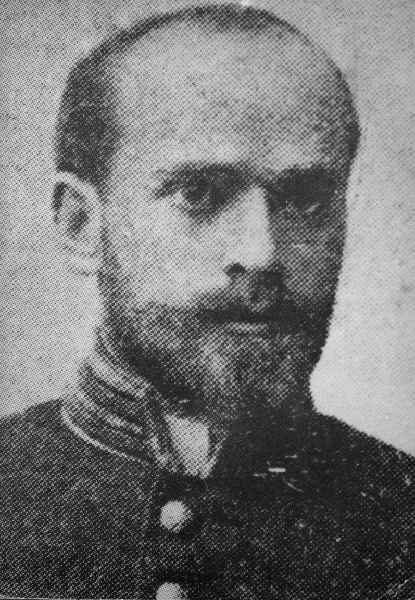
On 5 or 6 August 1942, German soldiers came to collect the 192 orphans (there is some debate about the actual number: it may have been 196), and about one dozen staff members, to transport them to Treblinka extermination camp. Korczak had been offered sanctuary on the “Aryan side” by Zegota but turned it down repeatedly, saying that he could not abandon his children. On 5 August he again refused offers of sanctuary, insisting that he would go with the children. He stayed with the children all the way until the end.
The children were dressed in their best clothes, and each carried a blue knapsack and a favorite book or toy. Joshua Perle, an eyewitness, described the procession of Korczak and the children through the ghetto to the Umschlagplatz (deportation point to the death camps):
Janusz Korczak was marching, his head bent forward, holding the hand of a child, without a hat, a leather belt around his waist, and wearing high boots. A few nurses were followed by two hundred children, dressed in clean and meticulously cared for clothes, as they were being carried to the altar.
According to a popular legend, when the group of orphans finally reached the Umschlagplatz, an SS officer recognized Korczak as the author of one of his favorite children's books and offered to help him escape. By another version, the officer was acting officially, as the Nazi authorities had in mind some kind of "special treatment" for Korczak (some prominent Jews with international reputations were sent to Theresienstadt). Whatever the offer, Korczak once again refused. He boarded the trains with the children and was never heard from again. Korczak's evacuation from the Ghetto is also mentioned in Wladyslaw Szpilman's book The Pianist:
He told the orphans they were going out in to the country, so they ought to be cheerful. At last they would be able to exchange the horrible suffocating city walls for meadows of flowers, streams where they could bathe, woods full of berries and mushrooms. He told them to wear their best clothes, and so they came out into the yard, two by two, nicely dressed and in a happy mood. The little column was led by an SS man...
Some time after, there were rumors that the trains had been diverted and that Korczak and the children had survived. There was, however, no basis to these stories. Most likely, Korczak, along with Wilczynska and most of the children, was killed in a gas chamber upon their arrival at Treblinka. A differing account of Korczak's departure is given in Mary Berg's Warsaw Ghetto diary:
Dr. Janusz Korczak’s children’s home is empty now. A few days ago we all stood at the window and watched the Germans surround the houses. Rows of children, holding each other by their little hands, began to walk out of the doorway. There were tiny tots of two or three years among them, while the oldest ones were perhaps thirteen. Each child carried the little bundle in his hand.
There is a cenotaph for him at the Okopowa Street Jewish Cemetery in Warsaw, with a monumental sculpture of Korczak leading his children to the trains. Created originally by Mieczyslaw Smorczewski in 1982, the monument was recast in bronze in 2002. The original was re-erected at the boarding school for children with special needs in Borzeciczki, which is named after Janusz Korczak.
Writings
Korczak's best known writing is his fiction and pedagogy, and his most popular works have been widely translated. His main pedagogical texts have been translated into English, but of his fiction, as of 2012 only two of his novels have been translated into English: King Matt the First and Kaytek the Wizard.
The copyright to all works by Korczak was acquired by The Polish Book Institute as of 8 January 2010. As of late 2011, they have embarked on an initiative to publish or re-publish many of Korczak's books, both in Polish and in other languages. As the date of Korczak's death was not officially established, his date of death for legal purposes was established in 1954 by a Polish court. As for other people whose death date was not documented, the death date was ruled to be 9 May 1946 and this date is considered by The Polish Book Institute as the beginning of 70 years copyright expiration period. As of 2012 there is ongoing court trial to move the date back to 1942, so that Korczak's works would be available in the public domain as of 1 January 2013.
Korczak's overall literary oeuvre covers the period 1896 to 8 August 1942. It comprises works for both children and adults, and includes literary pieces, social journalism, articles and pedagogical essays, together with some scrappy unpublished work, in all totaling over twenty books, over 1,400 texts published in around 100 publications, and around 300 texts in manuscript or typescript form. A complete edition of his works is planned for 2012.
Children's books
Korczak often employed the form of the fairy tale in order to actually prepare his young readers for the dilemmas and difficulties of real adult life, and the need to make responsible decisions.
In the 1923 King Matt the First (Krol Macius Pierwszy) and its sequel King Matt on the Desert Island (Krol Macius na wyspie bezludnej) Korczak depicted a child prince who is catapulted to the throne by the sudden death of his father, and who must learn from various mistakes.
He tries to read and answer all his mail by himself and finds that the volume is too much and he needs to rely on secretaries; he is exasperated with his ministers and has them arrested, but soon realises that he does not know enough to govern by himself, and is forced to release the ministers and institute constitutional monarchy; when a war breaks out he does not accept being shut up in his palace, but slips away and joins up, pretending to be a peasant boy - and narrowly avoids becoming a POW; he takes the offer of a friendly journalist to publish for him a "royal paper" -and finds much later that he gets carefully edited news and that the journalist is covering up the gross corruption of the young king's best friend; he tries to organise the children of all the world to hold processions and demand their rights – and ends up antagonising other kings; he falls in love with a black African princess and outrages racist opinion (by modern standards, however, Korczak's depiction of blacks is itself not completely free of stereotypes which were current at the time of writing); finally, he is overthrown by the invasion of three foreign armies and exiled to a desert island, where he must come to terms with reality – and finally does.
Recently (2012), another book by Korczak was translated into English. Kajtus the Wizard (Kajtus czarodziej) (1933) anticipated Harry Potter in depicting a schoolboy who gains magic powers, and it was very popular during the 1930s, both in Polish and in translation to several other languages. Kajtus has, however, a far more difficult path than Harry Potter: he has no Hogwarts-type School of Magic where he could be taught by expert mages, but must learn to use and control his powers all by himself - and most importantly, to learn his limitations.
Pedagogical books
In his pedagogical works, Korczak shares much of his experience dealing with difficult children. Korczak's ideas were further developed by many other pedagogues such as Simon Soloveychik and Erich Dauzenroth.
Thoughts on corporal punishment
Korczak spoke against corporal punishment of children at a time when such treatment was considered a parental entitlement or even duty. In The Child’s Right to Respect (1925), he wrote,
In what extraordinary circumstances would one dare to push, hit or tug an adult? And yet it is considered so routine and harmless to give a child a tap or stinging smack or to grab it by the arm. The feeling of powerlessness creates respect for power. Not only adults but anyone who is older and stronger can cruelly demonstrate their displeasure, back up their words with force, demand obedience and abuse the child without being punished. We set an example that fosters contempt for the weak. This is bad parenting and sets a bad precedent".
Fiction
Pedagogical books
Other books
In popular culture
In addition to theater, opera, TV, and film adaptations of his works, such as King Matt the First and Kaytek the Wizard, there have been a number of works about Korczak, inspired by him, or featuring him as a character.
Books:
Stage plays:
Musicals:
Film:
Television:
Music:
Astronomy:
